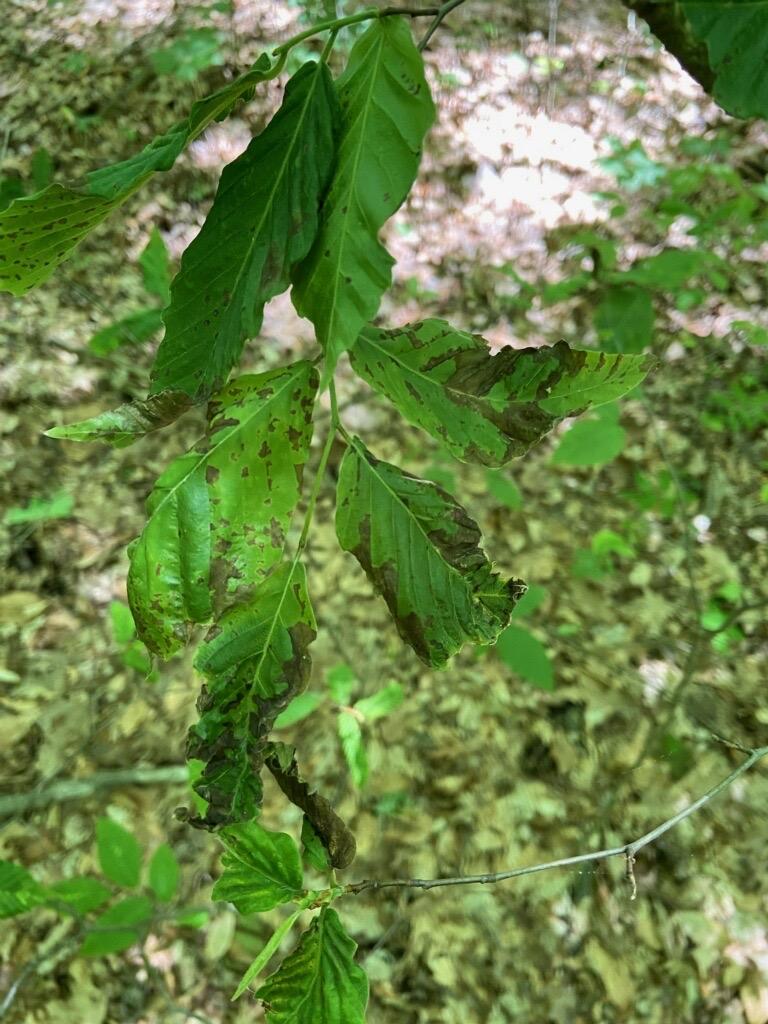
Three webinars during April and May provided updates on efforts to address three non-native, tree-killing pests: hemlock woolly adelgid (HWA), link invasive shot hole borers (ISHB), link and beech leaf disease (BLD) link. I attended each and summarize here.
- Hemlock conservation in North Carolina – the NC Hemlock Restoration Initiative (HRI) see SaveHemlocksNC.org
The webinar was recorded at Hope for the Hemlocks: HWA Management Approaches on Public and Private Lands in North Carolina. You probably need to be a member of the Natural Areas Association to watch the archived version.
I was pleased to learn about the major effort under way in North Carolina, where eastern and Carolina hemlocks are extremely important components of multiple ecosystems. In 2013, the Commissioner of Agriculture decided to make protecting hemlocks a signature project. He wanted to ensure that three state agencies – the Forest Service, Wildlife Department, and State Parks – worked together to improve the efficacy of treating trees. (Treatments available at the time were expensive and time-consuming.)
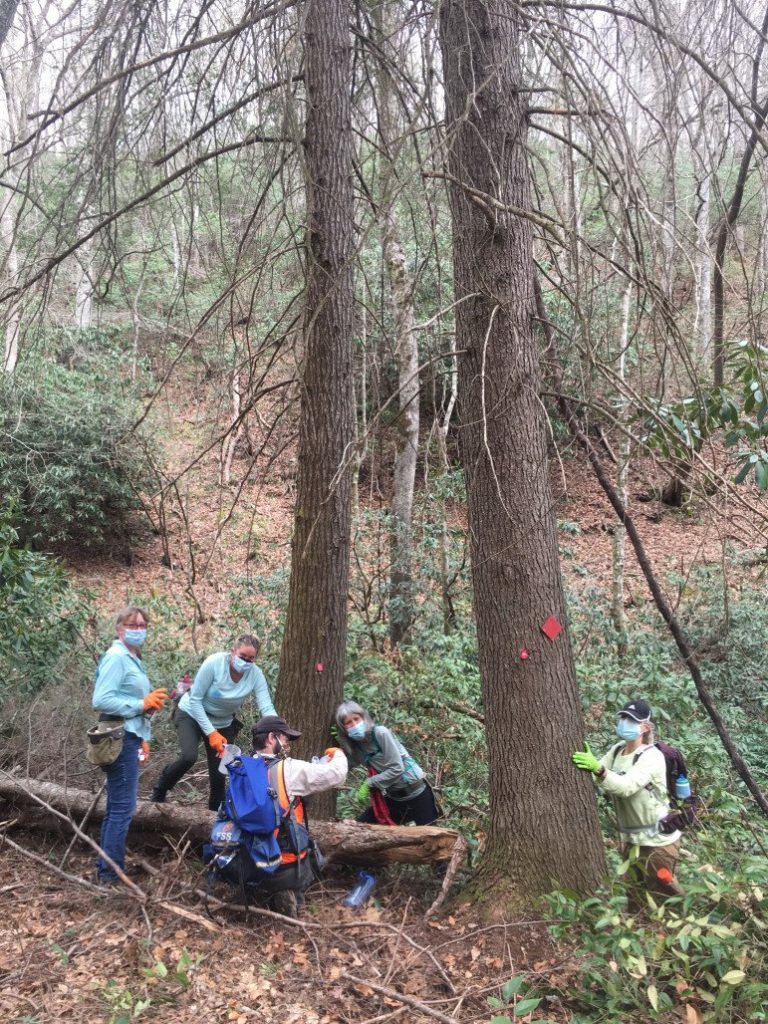
Thom Green described the result: North Carolina’s Hemlock Restoration Initiative (HRI). The initiative is administered by the Western North Carolina Communities – a non-governmental organization with strong connections to rural communities and a history of successful collaborative projects that support agriculture and forestry. It engages state agencies, local and county governments, local NGOs, and federal agencies and works on both public and private lands with the goal of ensuring that hemlocks can survive to maturity.
HRI staff work with local partners to identify priority hemlock conservation areas (HCAs). It then sends a “strike team” to guide the partners in treating as many trees as possible. (North Carolina allows non-licensed volunteers to apply pesticides under supervision; also, landowners can treat trees on their own property.) These collaborative projects can treat up to 1,000 trees per day.
The chemicals used are imidacloprid and, where poor tree health justifies emergency treatment, dinotefuran. These are usually applied as a soil drench because it is easier for people to transport the equipment into the woods. Bark spray is used in sensitive areas. They have found that imidacloprid provides five to seven years of protection. A new product, CoreTech, is even easier to transport and works much faster than imidacloprid, however, it costs more.
The HRI believes it is minimizing non-target impacts of the neonictenoid imidacloprid because:
- hemlocks are pollinated by wind, not insects
- hemlocks don’t exude resins that attract insects
- pesticide applications are tightly targetted at the base of trunk, with 10-foot setbacks from water
- long intervals between treatments (5 – 7 years) allow soil invertebrates to recover
The program has treated 100,000 trees between 2016 and 2021 on state and private lands. Now they are starting the second round of treatments for trees treated at the beginning of the program.
Treatment priorities are based primarily on the extent to which the trees are able to take up the chemical, evaluated by the percentage of the crown that is alive and the density of foliage. Since imidacloprid can take a year to reach the canopy of a mature tree, it is used only on trees with greater than half the crown rated as healthy. When trees have a lower status, dinotefuran is added (because it can reach the canopy within weeks). Trees with less than 30% live crown are not treated.
The Initiative also supports biocontrol programs. It has assisted releases of Laricobius nigrinis (a beetle in the family Derodontidae) and helps volunteers monitor releases and survival. Dr. Green reports that L. nigrinis has spread almost throughout western North Carolina but that questions remain regarding its impact on tree health. He thinks biocontrol is not yet reliable as stand-alone tool; success will require a suite of predatory insects.
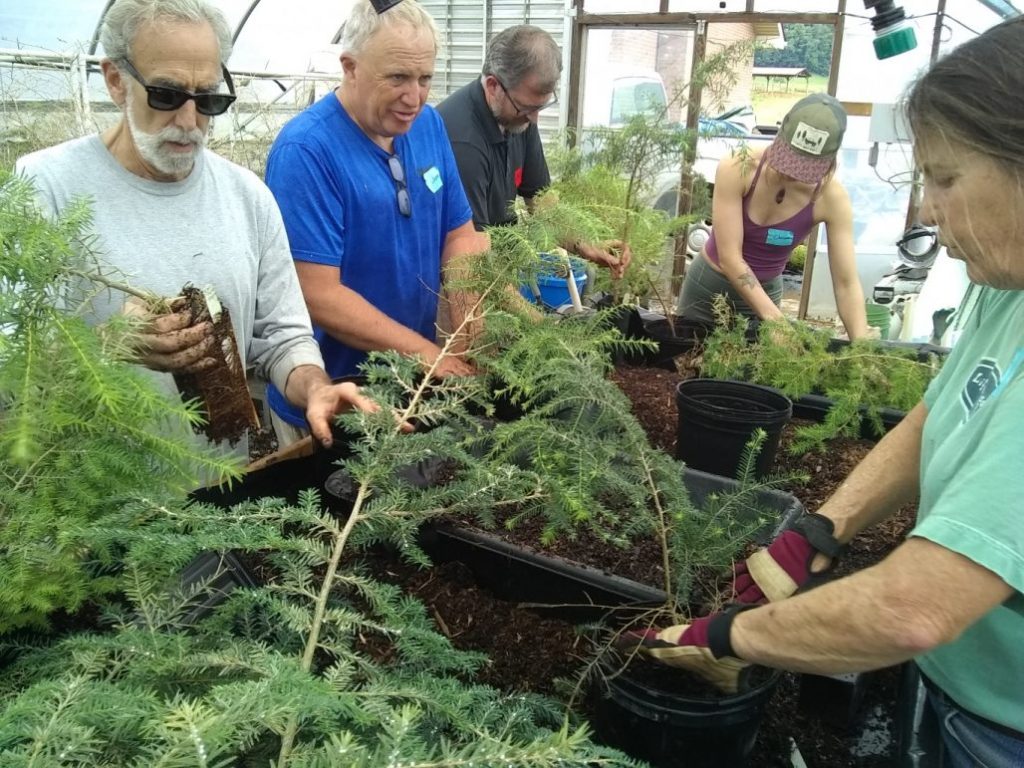
The HRI measures the success of various treatments (Hurray!). “Impact plots” are established at the start of treatment. Staff or volunteers return every three years to monitor all aspects of the health of a few designated trees – including untreated ones. So far, they have seen encouraging responses in crown density and new growth.
- Invasive Shot Hole Borers (ISHB) in California
See www.ishb.org and video recordings of the meeting at:
https://youtu.be/RyqJYyLkshk (Day 1); and https://youtu.be/kWmtcbjTczw (Day 2)
A host of scientists from California spent two full days describing research and management projects funded by specific state legislation – Assembly Bill (AB)-2470 on two invasive shot hole borers.
Adoption of this legislation resulted largely from lobbying by John Kabashima. Additional funding was provided by CalFire (the state’s forestry agency). The agency responsible for managing invasive species – California Department of Food and Agriculture (CDFA) had designated these organisms as not a threat to agriculture. So it did not fund many necessary activities.
The Problem and Where It Is
“Fusarium dieback” is the disease caused by this insect-pathogen complex. The insects involved are two ambrosia beetles in the Euwallacea genus – the polyphagous (E. whitfordiodendrus) and Kuroshio (E. Kuroshio) shot hole borers. link to DMFAccording to Dr. Bea Nabua-Behermann, Urban Forestry and Natural Resources Advisor with University of California Cooperative Extension (UCCE), other fungi are present on both beetle species but its matching Fusarium sp. is the principal associated fungus and is required for the beetle’s reproduction. These are Fusarium euwallaceae and F. kuroshium.
As of spring 2022, the beetle/fungus complex has spread as far north as Santa Barbara /Santa Clarita; and inland to San Bernardino and Riverside (see the map here). They are very widespread in Orange and San Diego counties. At least 65 tree species in southern California are reproductive hosts (globally, it is 77 species; see full list here). The preferred and most succeptible hosts are several species in the Acer, Parkinsonia, Platanus, Quercus, and Salix genera. Box elder (A. negundo) is so susceptible that it is considered a sentinel tree.
Because the beetles spend most of their life inside trees, their life cycle leaves few opportunities to combat them. Females (only) fly but tend to bore galleries on their natal tree. Several speakers on the webinar said management should focus on heavily infested “amplifier trees”. Much spread is human assisted since the beetles can survive in dead wood for months if it is damp enough for the fungus. Possible vectors are green waste, firewood, and even large wood chips or mulch.
Management – from Trapping to Rapid Response to Restoration
Akiv Eskalen of University of California Davis discussed trapping and monitoring techniques to confirm presence of the insect and pathogen. Also, he talked about setting priorities for treating trees based on the presence of reproductive hosts, host value, infestation level, and whether the trees pose a safety hazard. The disease causes too little damage to some hosts to warrant management. He emphasized the importance of preventing spread. This requires close monitoring of infested trees to see whether beetles move to neighbors. Dr. Eskalen described a major and intensive monitoring and treatment program at Disneyland. The 600 acres of parks, hotels, and parking lots have ~16,000 trees belonging to 681 species.
Several speakers described on-going efforts in Orange County. Danny Hirchag (IPM manager for Orange County Parks) described how his agency is managing 60,000 acres of variable woodlands containing 42,000 trees, of which 55% are hosts of ISHB and their associated fungi. Of greatest concern are California sycamore and coast live oak in areas of heavy public use. The highest priority is protecting public safety; next is protecting historic trees (which can’t be replaced); third is minimizing impacts to ecosystem services. Orange County Parks is currently removing fewer than 50 trees each year. Hirchag noted the importance of collaborating in the research trials conducted by the University of California Cooperative Extension.
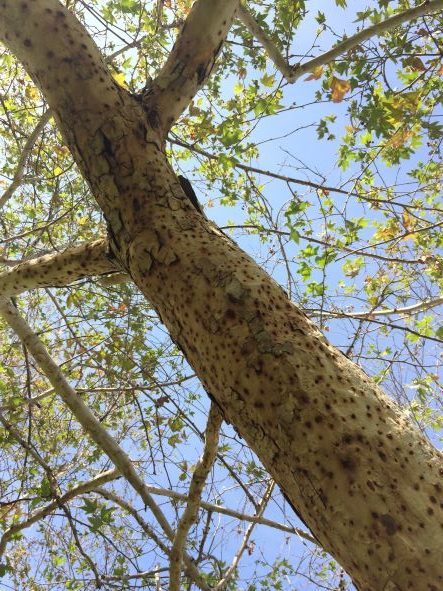
Maximiliano Regis and Rachel Burnap, of County of Los Angeles Department of Agricultural Commissioner/Weights and Measures, described Los Angeles County’s efforts more broadly. The challenge is clear: LA County has more than 160 parks. In 2021, they placed nearly 2,500 traps, mapped infected trees, carried out on-ground surveys to find amplifier trees, removed both amplifier and hazard trees (using funds provided by CalFire), and educated the public. Their efforts were guided by an early detection-rapid response (ED/RR) Plan (2019) developed by Rosi Dagit (see below). While London plane trees (Platanus x hispanica) and California sycamores (Platanus racemose) were initially most affected, now black locusts (Robinia pseudoacacia) and box elders (Acer negundo) are succumbing. [Note: both are widespread across North America.] The researchers are trying to determine why some areas are largely untouched, despite the presence of the same tree species. Regis and Burnap noted the increasing difficulty getting confirmation of the pathogen’s presence because laboratories are overwhelmed. They continue looking for funding sources.
Rosi Dagit, Senior Conservation Biologist, Resource Conservation District of the Santa Monica Mountains, described the creation of that ED/RR system for Los Angeles County as a whole, without regard for property lines. Participants established random study plots across the entire Santa Monica Mountains Natural Recreation Area (NRA), based on proximity to areas of particularly sensitive ecological concerns. The fact that the NRA’s forests are aging and that the risk of infestations is especially high in riparian forests helped persuade policy-makers to fund the effort. The accompanying rapid response plan informs everyone about what to do, who should do it, and who pays. This information incorporates agencies’ rules about what and where to plant. It also provides measures to evaluate whether the action was effective. It did take more than two years for the county to set staffing needs etc.
John Kabashima link discussed his criteria for replanting and ecosystem restoration following tree removal in the southern California region. He recommends prompt removal of amplifier trees – especially box elder and California sycamore. He relies on replanting guidance developed by UC-Irvine (which is on the website) – especially avoiding monocultures. Kabashima reiterated the importance of close monitoring to track beetle populations and responding quickly if they build up.
Economics of Urban Forests and Cities Most at Risk
Karen Jetter (an economist at the UC Agriculture Issues Center) has developed a model to compare the costs of an early detection program to the environmental and monetary costs of infestation by Fusarium disease. She noted that early detection and monitoring programs are often hard to justify because — when they are successful — nothing changes! She found that averted or delayed costs (including tree removals, lost ecosystem services, lost landscape asset value [replanting value] and the cost to replant) always far exceeded the cost of monitoring programs. Unfortunately, a written report about this effort (Jetter, K., A. Hollander, B.E. Nobua-Behrmann, N. Love, S. Lynch, E. Teach, N. Van Dorne, J. Kabashima, and J. Thorne. 2022. Bioeconomic Modeling of Invasive Species Management in Urban Forests; Final Report) appears to be available only through the University of California “collaborative tools” website dedicated to practitioners and stakeholders engaged on ISHB issues. If you are not a member of the list, contact me using the comment button and ask that I send it to you. Include your email address (the comment process makes determining emails difficult if not impossible.)
Shannon Lynch (UC Davis) developed a model to estimate vulnerability of urban areas based on phylogenetic structure (relationship between tree species), host abundance, and number of beetle generations/year (linked to temperature). She found that areas with less favorable host communities can become vulnerable if the climate becomes favorable. Where the host community is already favorable, climate not important.
She evaluated 170 California cities based on their tree inventories. The cities at highest risk were San Diego, Los Angeles, the San Francisco Bay area, and the Central Valley – e.g., Sacramento. For areas lacking tree inventories, she based her risk determination on the estimated number of generations of beetles per year – based on climate. This analysis posited a very high risk in the eastern half of southern California and the Central Valley. Participants all recognized the need to apply this model to cities in Arizona and Nevada.
Possible Management Strategies
Shannon Lynch (UC Davis) studied whether endophytes might be used to kill the Fusarium fungi. She reported finding 771 fungal strains and 657 bacterial strains in tree microbiomes. Some of the fungal isolates impeded growth of the Fusarium fungi in a petri dish. She began testing whether these fungi can be used to inoculate cuttings that are to be used for restoration. She also planned to test more endophytes, and more native plant species to explore creation of a multi-fungus cocktail.
Richard Stouthamer of UC Riverside is exploring possible biocontrol agents. Of three he has evaluated, the most promising is Phasmastichus sp., which is new to science. He is still trying to establish laboratory cultures so he can test its host specificity.
- Beech Leaf Disease (BLD) – Ongoing Research by the BLD Research Group
See bldresearch@lists.osu.edu
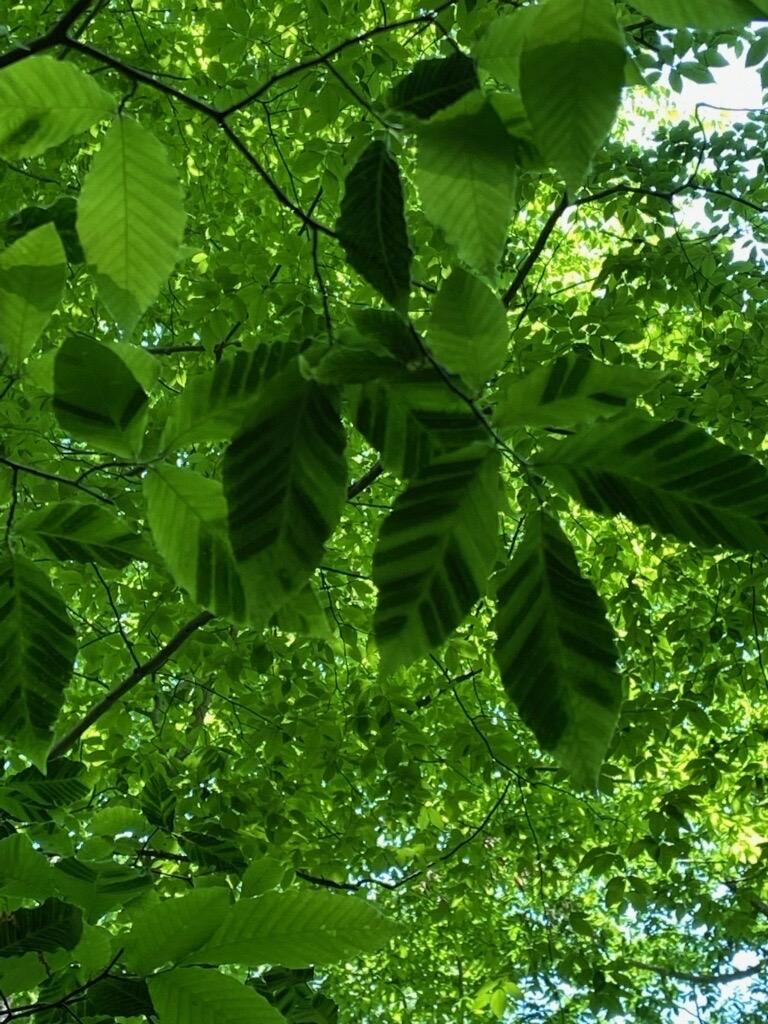
At this meeting, scientists described research aimed at improving basic understanding of beech leaf disease’s causal agents, its mechanisms of spread, etc. Their findings are mostly preliminary.
These findings are of greatest importance now:
- presence of the nematodes varies considerably across leaf surface – if one collects samples from the wrong site on leaf, one won’t detect nematode (Paulo Vieria, Agriculture Research Service)
- developing predictive risk maps that combines temperature, humidity, elevation, soils (Ersan Selvi, Ohio State). So far, he has found that BLD is greater in humid areas – including under closed forest canopies. The USFS is funding studies aimed at incorporating disease severity in detection apps.
- determining extent of nematode presence. Sharon Reed of Ontario has found nematode DNA in trap fluids throughout the Province. It is much more common at known disease sites. Reed is also studying the presence of arthropods on beech leaves and buds.
Longer term findings and questions
- possible vectors:
- nematode DNA has been detected from birds – although it is not clear whether the DNA came from bird feces, feathers, or dust (DK Martin)
- a few live nematodes have been extracted from the excrement of caterpillars that fed on infected leaves (Mihail Kantor, ARS)
- nematode damage to leaves:
- presence of the nematode in leaf buds before they open (Vieria and Joe Mowery, both ARS). The nematode can create considerable damage in leaf buds before they open. Nematodes are present as early as October of the preceding year.
- damage to leaves by nematode (Mowery, ARS) Leaf epidermal cells are distorted, stomata blocked, chlorobasts are larger than normal, irregular shape
- possible management tools
- are there parasites that might attack the nematode? (Paulo Vieria, ARS)
- experimental treatment of infested trees using phosphite (Kandor, ARS)
- ecology: how do root microbiomes compare on infested and healthy trees? (Caleb Kime, Ohio State; and David Burke, Vice President for Science at Holden Arboretum)
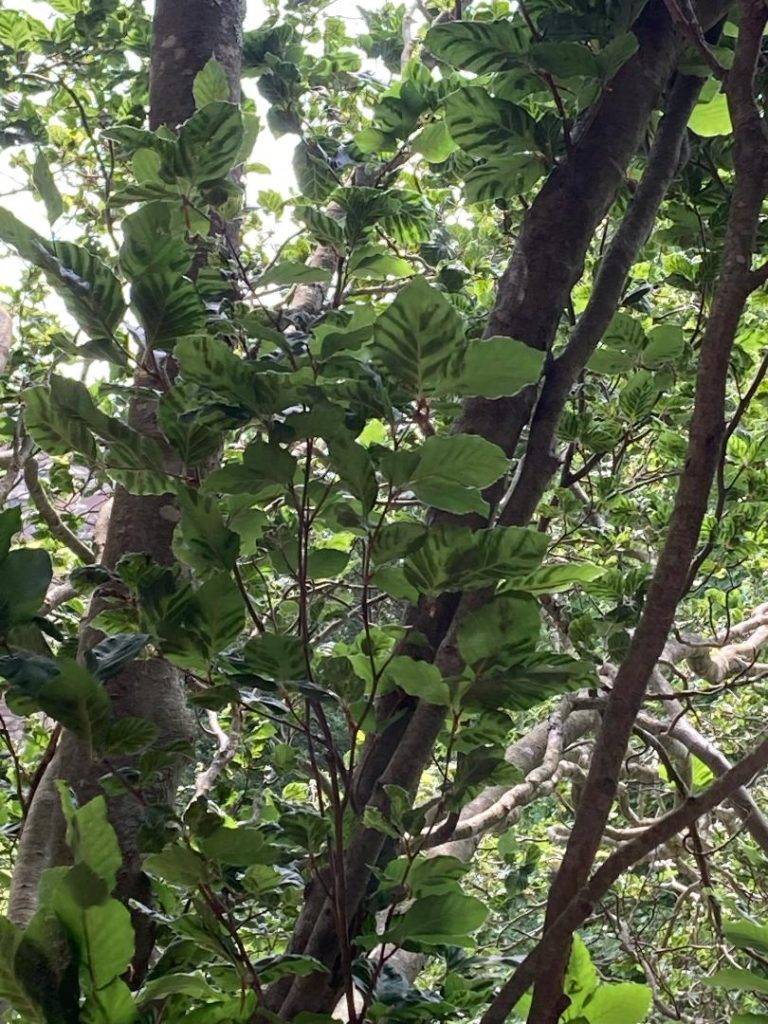
Posted by Faith Campbell
We welcome comments that supplement or correct factual information, suggest new approaches, or promote thoughtful consideration. We post comments that disagree with us — but not those we judge to be not civil or inflammatory.
For a detailed discussion of the policies and practices that have allowed these pests to enter and spread – and that do not promote effective restoration strategies – review the Fading Forests report at http://treeimprovement.utk.edu/FadingForests.htm
or